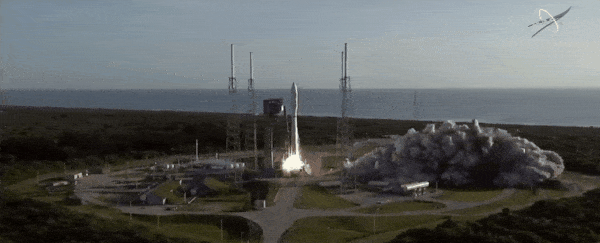A rocket carrying NASA's most ambitious Mars rover yet has launched from Cape Canaveral, Florida, though its crucial journey through space is just beginning.
The Perseverance rover and its landing apparatus is packed inside the top of a 197-foot Atlas V rocket at Cape Canaveral, Florida, Thursday morning. At 7:50 am ET, the rocket's boosters fired and heaved it off the launchpad, beginning a high-stakes, hour-long rocket ride to the orbital path to deliver the robot to Mars.
If it survives the journey ahead, the $US2.4 billion mission's car-size rover will scan and drill Martian rock for signs of alien life, release the first-ever interplanetary helicopter from its belly, and test technologies that humans will need to survive on the Red Planet.
The rocket must complete a series of complex manoeuvres as it speeds through Earth's atmosphere, jettisoning outer layers and firing engines at the right moments to push Perseverance onto its path to Mars.
The launch won't be a success until the rover's spacecraft separates from the rocket's upper stage and departs on its seven-month journey across interplanetary space.
Here's how the launch should proceed:
- Liftoff, 7:50 am ET
- Jettison solid rocket boosters, 7:51:49 am
- Jettison payload fairing, 7:53:27 am
- Cut off booster engine, 7:54:21 am
- Separate the rocket's upper stage from the core booster, 7:54:27 am
- Start the main engine, 7:54:37 am
- Cut off the main engine, 8:01:39 am
- Start the main engine again, 8:35:21 am
- Cut off the main engine again, 8:42:59 am
- Separate Mars rover spacecraft from the upper stage, 8:47:42 am
- Start venting excess fuel out of the upper stage to avoid an explosion, 9:14:02 am
- Launch operations complete, 9:57:22 am
The momentum from the launch and a big boost from Earth's rotation should carry the spacecraft over 314 million miles to reach Mars in February 2021. A giant jetpack should safely lower the rover into Mars's Jezero Crater – an ancient river delta that could harbour traces of alien life.
Perseverance is programmed to search for those traces – ancient rocks containing chemical signatures that only life would leave behind – and prepare samples for later return to Earth.
This marks July's third Mars launch. The United Arab Emirates and China each launched their own spacecraft to the Red Planet on July 18 and 23. All three missions are trying to catch Mars as it passes close to Earth. That won't happen again until 2022.
This article was originally published by Business Insider.
More from Business Insider:
